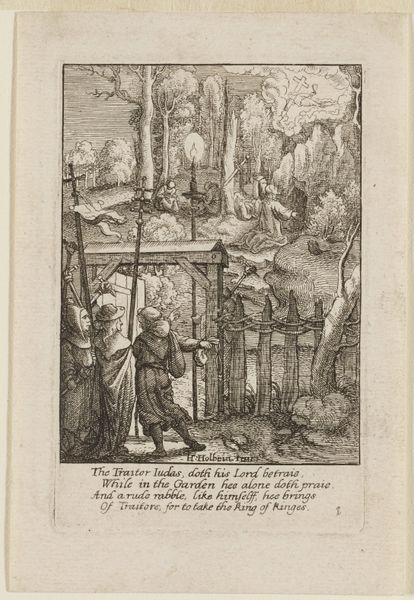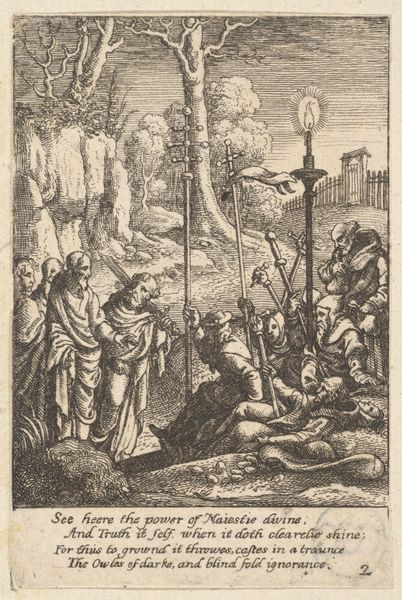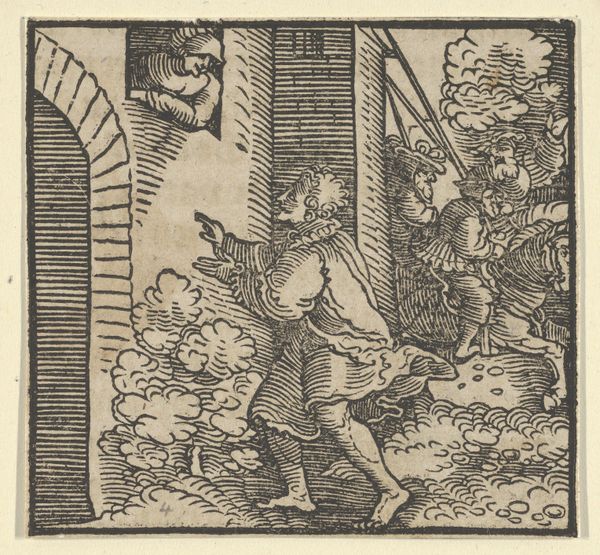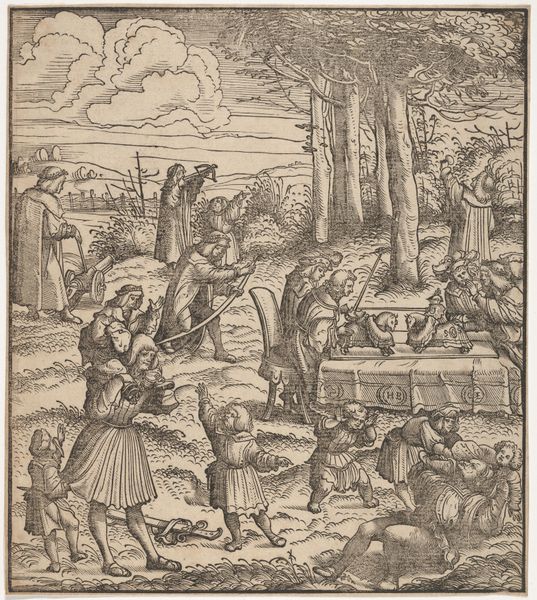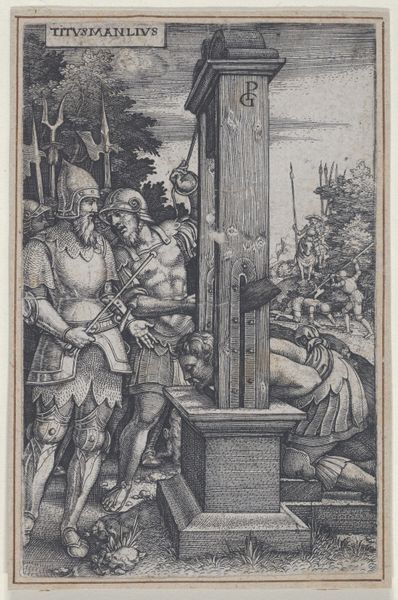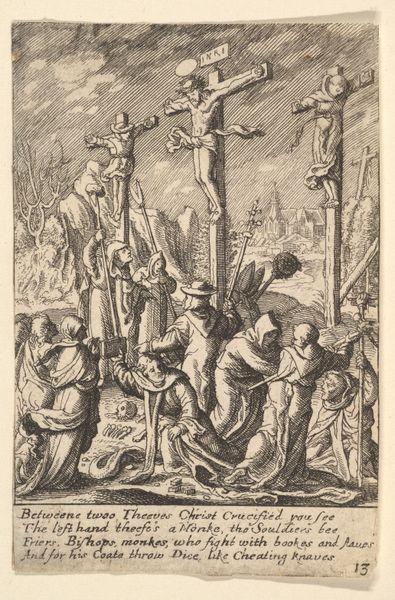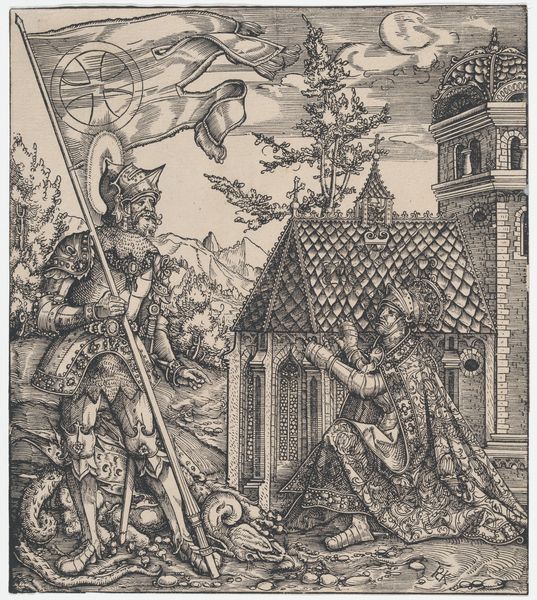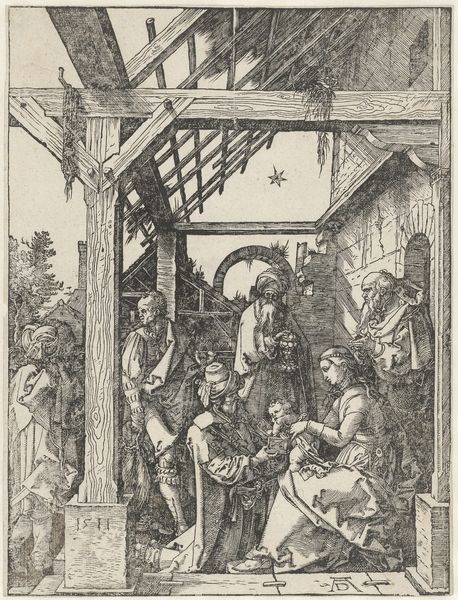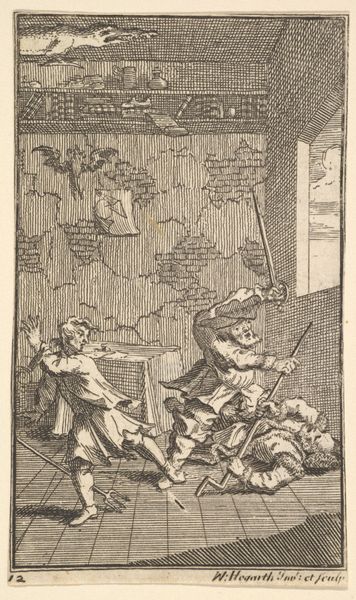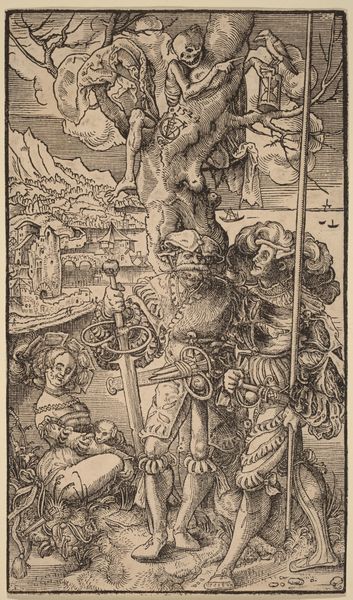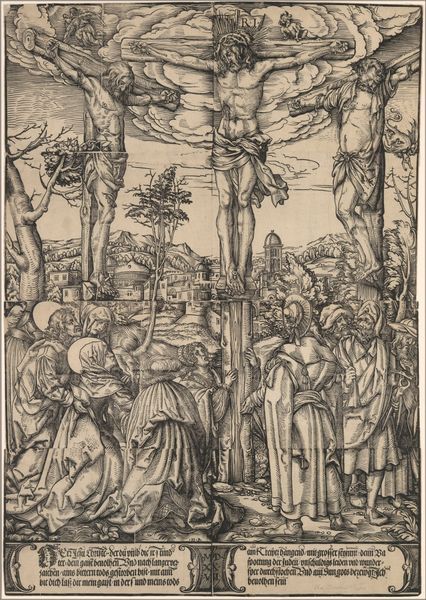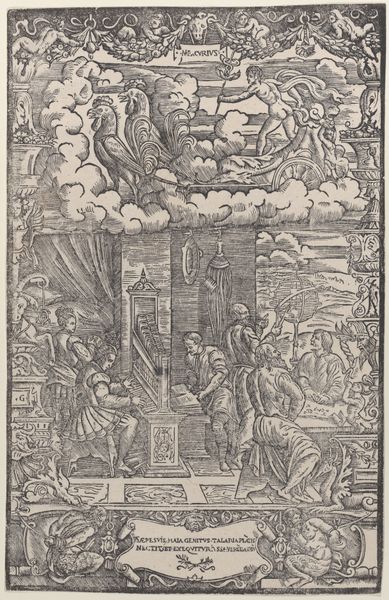
drawing, print, engraving
#
drawing
#
narrative-art
#
baroque
# print
#
figuration
#
11_renaissance
#
cross
#
line
#
history-painting
#
engraving
Dimensions: Sheet: 3 9/16 × 2 3/8 in. (9 × 6 cm)
Copyright: Public Domain
Curator: This engraving by Wenceslaus Hollar, executed between 1644 and 1652, is titled "Jesus on the Mount of Olives," a moment of profound emotional and historical weight, captured through delicate lines and striking contrast. What are your immediate impressions? Editor: Bleak, if I had to sum it up in a word. There’s a terrible sense of foreboding in the way the artist uses the hatching, especially the shadows that obscure so much of the scene. You know what’s coming, that's inescapable given the title and that tension vibrates off the plate. Curator: Indeed, that density! Hollar, primarily a printmaker and draughtsman, was a master of detail, and it's so evident here in the varied textures and sense of depth. Though small, the work has this incredible capacity to contain multitudes, not only literally with all these tiny details, but metaphorically. See how the line almost seems to quiver, embodying a fragility. It really gets under my skin. Editor: Absolutely. This rendering underscores the vulnerability of Jesus. I’m struck by the way Hollar contrasts the praying Jesus with the heavily armed soldiers. It’s like a clash between the spiritual and the martial. We see this pervasive tension between divinity and humanity that underscores much of the baroque aesthetic, and a questioning of institutional authority. What is justice when divine love and imperial power face one another? It reminds me of Fanon’s writing on colonialism… Curator: I find the depiction of the landscape almost dreamlike – the gnarled trees, the oddly positioned light sources. And those slumbering disciples...such human moments punctuating this epic scene! There’s almost a storybook quality in Hollar's rendering. Editor: And there’s a deeply political reading here, too. Who does get to sleep through a crisis, and who is left wide awake, waiting? To me, it also shows the historical narrative surrounding acts of protest against dominant structures. The narrative continues to reverberate within contemporary socio-political climates and their connection to theological structures. Curator: So true. This print acts almost like a mirror. Centuries later and the themes he captured so long ago echo in the world around us. I find that terribly moving and somewhat chilling, don't you? Editor: Without question, the ability of art to reflect both history and our current moment speaks volumes.
Comments
No comments
Be the first to comment and join the conversation on the ultimate creative platform.

